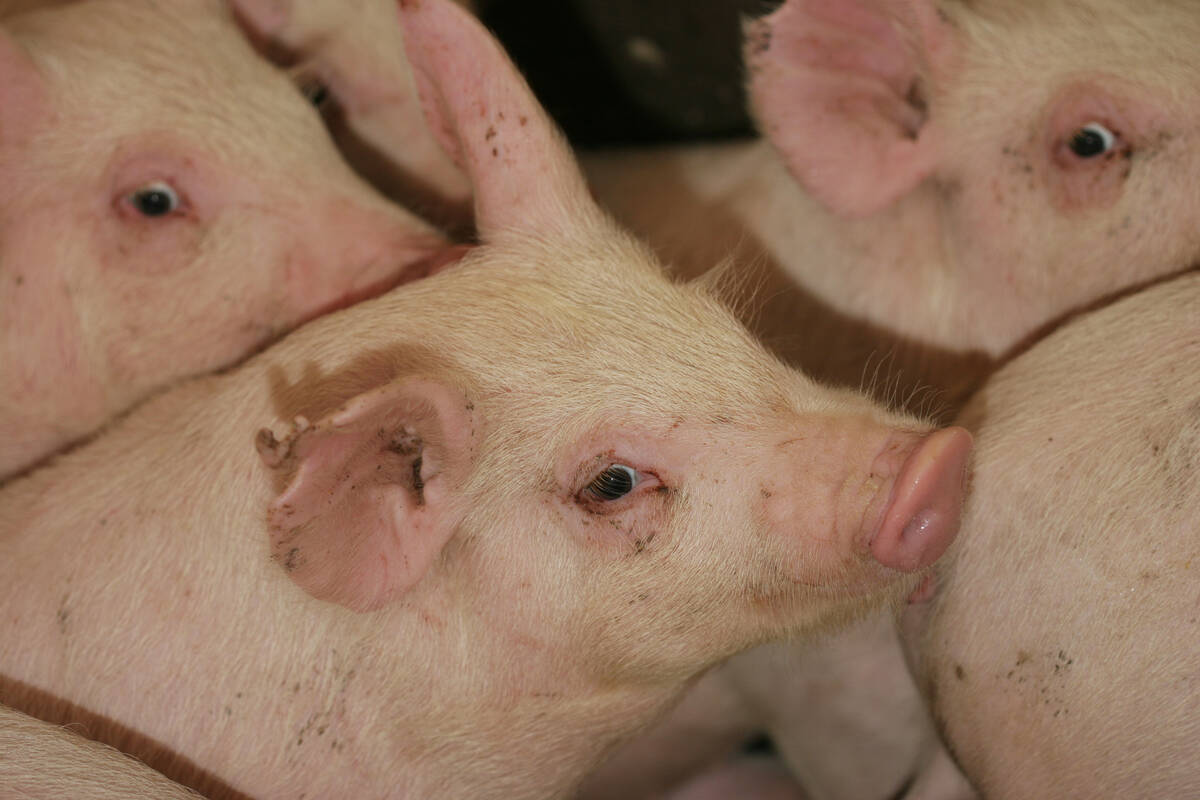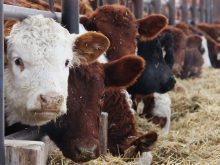PHOENIX, Ariz. – Farmers need a simple plan against bovine viral diarrhea virus that includes effective tests, vaccines and management to prevent infections and eliminate existing cases, veterinarians say.
“Biosecurity is probably one of the most critical controls to combat BVD virus,” said infectious disease specialist Dan Grooms of Michigan State University.
Mike Sanderson of Kansas State University’s college of veterinary medicine said farmers need to measure the risk of the disease occurring, the magnitude of the loss it causes and what it costs to prevent it. No program will be 100 percent effective in eliminating disease risk, he added.
Read Also

The Western Producer Livestock Report – September 25, 2025
The U.S. national live price average for barrows and gilts was $81.21 Sept. 17. It was $78.37 Sept. 9. U.S. hogs averaged $106.71 on a carcass basis Sept. 17, up from $106.10 Sept. 9.
“BVD occurs each year depending on the management practices of the ranch, but the actual occurrence of disease is an intermittent event,” he said.
The veterinarians spoke at a BVD symposium in Phoenix, Arizona earlier this year.
BVD affects cattle, sheep, pigs, llamas, alpacas and deer. The virus rapidly mutates, making it difficult to find the right vaccines and diagnoses.
The primary form of BVD involves animals with a variety of symptoms but they are able to fight off the disease.
The other form is the persistently infected animal. It becomes infected as a fetus during the period of 40 to 150 days of gestation. These animals are carriers throughout their lifetime, but persistently infected adults are rare. They may be culled or die at an early age. They typically do not grow well but can look normal.
Diagnostic tests may be done with a blood or tissue sample. Persistently infected animals are constantly shedding the virus.
Animals that test positive should be isolated for three weeks and retested before they can be classified as persistently infected.
Testing can be expensive but can confirm a producer’s suspicions when he sees acute respiratory problems, poor fertility, abortions or deformed calves.
“If you have a calf that can’t stand up and has a dome shaped head, you should test for BVD,” said Daniel Givens of Auburn University.
“If you have never tested for BVD on your farm, there is a likelihood it is there.”
It may not be economical to test calves every year, but that does not mean surveillance should stop. Producers should involve a veterinarian who understands the economics of BVD and how it spreads.
They should test before the breeding season. There is no test to determine if a fetus is persistently infected. The ear notch test is best in young calves because the colostral antibodies won’t appear in the ear tissue.
If BVD is not present, tighten biosecurity and control the movement of animals, vehicles and people on the farm.
“Biosecurity requires diligence,” Givens said.
- Do not use an untested bull or semen or embryos that have not been certified.
- Do not allow people wearing boots and coveralls contaminated by other herds to contact your cattle.
- Do not allow contaminated equipment such as syringes, dehorners, castration knives and tagging pliers that have been used on other herds to be used on your herd.
- Implement appropriate fly control and limit herd contact with wildlife, especially deer.
The most common way to introduce BVD is by adding new cattle with unknown disease status to a herd. This is especially true when bringing in replacement heifers or young bulls because the prevalence of persistent infection is more common in young animals.
Show cattle are at higher risk of picking up the disease and should be isolated for three to four weeks after returning to the farm. Bull test stations, sales and exhibitions are starting to demand certification that all animals are BVD free.
About 150 BVD modified live vaccines or killed virus vaccines are available.
“Vaccines are not a silver bullet,” Grooms said. “They are a useful tool, but not the answer to controlling BVD.”
Vaccines should provide a cow with a high level of immunity before breeding and throughout pregnancy. Both killed and modified live vaccines are available and are safe to use as long as the label instructions are followed. Each producer has to evaluate what works best for his operation.
Vaccination of heifers and cows should prevent reproductive losses.
The least reliable method is vaccinating each year before breeding with a single dose of killed virus. The most reliable is vaccination with two doses of modified live vaccine at least 30 days before breeding and annual revaccination of cows with a single dose of modified live vaccine before breeding.
When preventing the virus in bulls, the least useful method is vaccination each year before breeding with a single dose of killed vaccine. The most reliable is vaccination with two doses of cenotaphic, modified live virus at least 30 days before initial breeding and annual revaccination with a single dose of modified live vaccine before breeding.
A number of vaccines are available, and the label should indicate whether they provide protection against Type I and II strains and fetal protection.
It is more effective to give the vaccine under the skin than into the muscle because more BVD cells are found in the skin. Most vaccines can be given subcutaneously.
A new website at www.bvdinfo.org has been created to consolidate BVD information.















